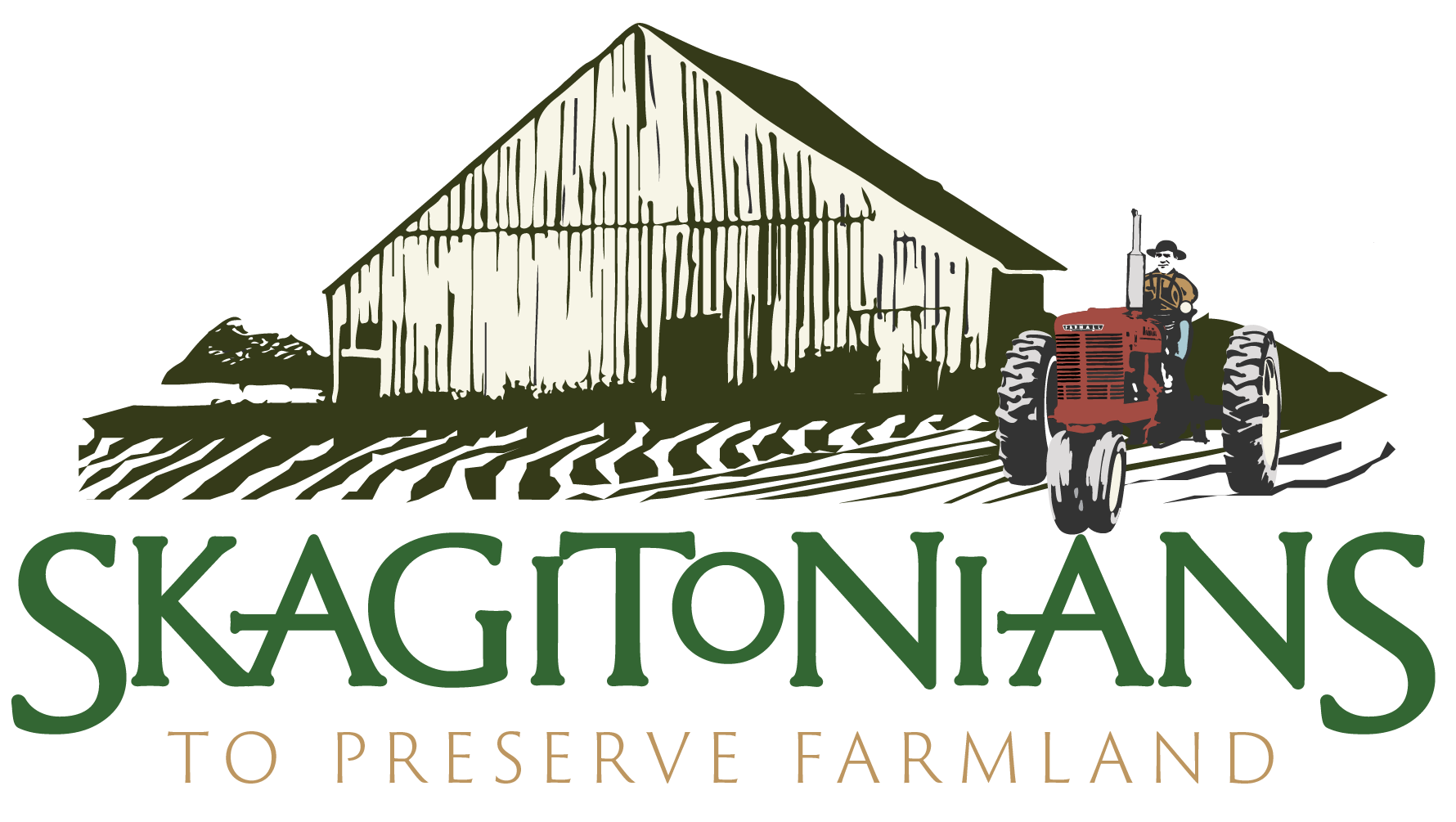Hop Skagit: Aerial Farming with Deep Roots
Photo: Anne Basye
“I don’t want to do the least damage. I want to make the farm better. When soil tests show soil is improving every year, that’s exciting.”
Plant a row of hops, and you’ll harvest hops for 30 years.
What begin as thin, short shoots grow a foot a day as summer solstice approaches. Seeking the sun, they race up V-shaped supports to a horizontal wire strung between tall poles.
By August, the hopyard is shady, entrancing, and about 20 feet tall. Once the “bine” or central structure of the plant is established, the plant fans out overhead, producing hop cones prized by brewers and floral designers. One bine loaded with cones and foliage can weigh up to 100 pounds. Standing beneath them is like being “in a secret garden,” says Byron Betts.
Betts and spouse Amy Moe are Hop Skagit, the first Skagit farm to grow commercial hops in many, many years. Once common in Skagit County, hops were chased to eastern Washington by the persistence of downy mildew in the soil, which can affect cones and stunt or kill the plant. The Moe-Betts wanted a sustainable, perennial crop that would enhance rather than deplete their soil, fill a market niche, and grow up instead of out on their micro farm behind Amy’s father’s barn.
Hops checked all the boxes. Its 30-foot tap root means less time spent on irrigation and fewer worries about weeds taking nutrients away from the plants.
The family has a significant tap root too. Amy is a fourth-generation member of the Moe family, which ran dairy farms in west Mount Vernon for 100 years. Her fifth-generation daughters love growing up on their grandparents’ farm. “I have nine cousins and Byron and I are the only ones doing anything in farming,’ she says. “We grew up doing it and we know it’s hard!” They may also be the only aerial farmers in the valley. Planted in dirt, hops grow in the sky. Ladders and a long Brazilian tool called a pardalera lets Byron manage the high-wire crop.
Downy mildew is still in the soil, and can spread quickly. In the spring, Amy and Byron rip the tops of weeds away from the emerging hop shoots and use handheld torches to kill mildew. When it’s warmer and drier, they let some weeds come up, because they attract beneficial insects like ladybugs, lacewings, and parasitoid wasps that help control aphids.
“We’re aiming for diversity,” said Amy. “The dominant farming formula for weeds has been ‘kill it all and grow what you want’. Our approach is to allow more weeds back, but keep out noxious weeds like thistle and pigweed. I’m not going to let any of them blow into a neighboring field.”
Every step of the process has been a learning experience, from choosing the right hops varieties to fine-tuning their mulch, irrigation, and soil-building recipe (compost tea and iron phosphates) and building equipment to dry their product.
Having income from day jobs lets them take risks that other growers can’t afford. Which is fortunate, because the risks last all season. “We never know if it’s actually going to work until September,” says Byron. “You could have great crop in August and if rain hits and it’s warm the downy mildew could come a week before harvest, and take down everything.”
The floral market is their hedge against disaster. Moe and Betts grow nine types of ‘noble’ hops that produce about 1400 pounds of hop cones. The Seattle Wholesale Growers Market, co-founded by Skagit county flower farmer Diane Szukovathy, “will take fresh green hops, dried hops, and entire bines to use as garlands for weddings,” says Byron. As long as hops look pretty, they can go to floral market. But hops for beer need to be harvested when lupulin, the part that contains essential oils, is plump, wet, and ready to cut.
Then, the couple organizes three or four all-hands-on-deck harvests. While Amy and Byron climb ladders to cut and pull down the long vines, friends and family pluck off the cones. Sometimes Amy’s dad and his band play music. Everybody gets a meal.Most commercial brewing systems use “dry hops” that have been dried and ground into pellets. Hop Skagit dries and packages the full hops flower. Its fresh hops, called “wet hops”, are in demand from local breweries that produce beer with a distinct terroir or flavor.
Last September, 20 members of the Penn Cove Brewery’s Beer Club converged at Hop Skagit to pluck 100 pounds of hop cones. They worked quickly, so the hops could go “from living in the ground and into the kettle in four hours,” said Penn Cove brewer Erick Adam.
photo: Anne Basye
Hop cones get to Skagit-based Garden Path Fermentation’s kettle in just two hours, says co-founder Ron Extract, and are then fermented with native yeast. He says his brewery connects with Amy and Byron’s “mission of trying to grow something that is native to our region, and differently than how it is done elsewhere. It’s all about creating something that represents who and where we are.”
After the hops have been cut, sold as flowers or as dried or fresh hops for beer, “we are tired,” says Amy. “We look at each other and say, are we crazy? What are we doing?”
They’re not crazy, and everything they are doing is helping regenerate the Moe farm.
“I don’t want to do the least damage,” says Amy, “I want to make the farm better. When soil tests show soil is improving every year, that’s exciting.”
Story by Anne Basye: info@skagitonians.org


